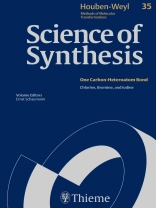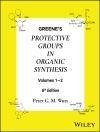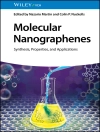Science of Synthesis: Houben-Weyl Methods of Molecular Transformations is the entirely new edition of the acclaimed reference series Houben-Weyl, the standard synthetic chemistry resource since 1909. This new edition is published in English and will comprise 48 volumes published between the years 2000 and 2008.
Science of Synthesis is a quality reference work developed by a highly esteemed editorial board to provide a comprehensive and critical selection of reliable organic and organometallic synthetic methods. This unique resource is designed to be the first point of reference when searching for a synthesis strategy.
- Contains the expertise of presently 400 leading chemists worldwide
- Critically evaluates the preparative applicability and significance of the synthetic methods
- Discusses relevant background information and provides detailed experimental procedures
For full information on the Science of Synthesis series, visit the Science of Synthesis Homepage
Tabla de materias
<p>35.1 Product Class 1: One Saturated Carbon—Chlorine Bond<br>35.1.1 Product Subclass 1: Chloroalkanes<br>35.1.1.1 Synthesis by Substitution of Hydrogen<br>35.1.1.2 Synthesis by Substitution of Metals<br>35.1.1.3 Synthesis by Substitution of Carbon Functionalities<br>35.1.1.4 Synthesis by Substitution of Other Halogens<br>35.1.1.5 Synthesis by Substitution of Oxygen Functionalities<br>35.1.1.6 Synthesis by Substitution of Sulfur, Selenium, or Tellurium Functionalities<br>35.1.1.7 Synthesis by Substitution of Nitrogen Functionalities<br>35.1.1.8 Synthesis by Addition to π-Type C—C Bonds<br>35.1.1.9 Synthesis from Other Chlorine Compounds<br>35.1.2 Product Subclass 2: Propargylic Chlorides<br>35.1.3 Product Subclass 3: Benzylic Chlorides<br>35.1.3.1 Synthesis by Substitution of Hydrogen<br>35.1.3.2 Synthesis by Substitution of Carbonyl Oxygen<br>35.1.3.3 Synthesis by Substitution of σ-Bonded Heteroatoms<br>35.1.4 Product Subclass 4: Allylic Chlorides<br>35.1.4.1 Synthesis by Substitution of Hydrogen α to a C=C Bond<br>35.1.4.2 Synthesis by Substitution of σ-Bonded Heteroatoms<br>35.1.5 Product Subclass 5: 1-Chloro-n-Heteroatom-Functionalized Alkanes (n ≥2) with Both Functions Formed Simultaneously<br>35.1.5.1 Synthesis by Addition across C=C Bonds<br>35.1.5.2 Synthesis by Addition across C—O Bonds<br>35.1.5.3 Synthesis by Addition across C—S Bonds<br>35.1.5.4 Synthesis by Addition across C—N Bonds<br>35.1.5.5 Synthesis by Addition across C—C Bonds<br>35.2 Product Class 2: One Saturated Carbon—Bromine Bond<br>35.2.1 Product Subclass 1: Bromoalkanes<br>35.2.1.1 Synthesis by Substitution of Hydrogen<br>35.2.1.2 Synthesis by Substitution of Metals<br>35.2.1.3 Substitution of Carbon Functionalities<br>35.2.1.4 Synthesis by Substitution of Other Halogens<br>35.2.1.5 Synthesis by Substitution of Oxygen Functionalities<br>35.2.1.6 Synthesis by Substitution of Sulfur, Selenium, or Tellurium Functionalities<br>35.2.1.7 Synthesis by Substitution of Nitrogen Functionalities<br>35.2.1.8 Synthesis by Addition to π-Type C—C Bonds<br>35.2.1.9 Synthesis from Other Bromo Compounds<br>35.2.2 Product Subclass 2: Propargylic Bromides<br>35.2.3 Product Subclass 3: Benzylic Bromides<br>35.2.3.1 Synthesis by Substitution of Hydrogen<br>35.2.3.2 Synthesis by Substitution of Carbonyl Oxygen<br>35.2.3.3 Synthesis by Substitution of σ-Bonded Heteroatoms<br>35.2.4 Product Subclass 4: Allylic Bromides<br>35.2.4.1 Synthesis by Substitution of Hydrogen α to a C=C Bond<br>35.2.4.2 Synthesis by Substitution of σ-Bonded Heteroatoms<br>35.2.5 Product Subclass 5: 1-Bromo-n-Heteroatom-Functionalized Alkanes (n ≥2) with Both Functions Formed Simultaneously<br>35.2.5.1 Synthesis by Addition across C=C Bonds<br>35.2.5.2 Synthesis by Addition across C—O Bonds<br>35.2.5.3 Synthesis by Addition across C—S Bonds<br>35.2.5.4 Synthesis by Addition across C—N Bonds<br>35.2.5.5 Synthesis by Addition across C—C Bonds<br>35.3 Product Class 3: One Saturated Carbon—Iodine Bond<br>35.3.1 Product Subclass 1: Iodoalkanes<br>35.3.1.1 Synthesis by Substitution of Hydrogen<br>35.3.1.2 Synthesis by Substitution of Metals<br>35.3.1.3 Synthesis by Substitution of Carbon Functionalities<br>35.3.1.4 Synthesis by Substitution of Other Halogens<br>35.3.1.5 Synthesis by Substitution of Oxygen Functionalities<br>35.3.1.6 Synthesis by Substitution of Sulfur, Selenium, or Tellurium Functionalities<br>35.3.1.7 Synthesis by Substitution of Nitrogen Functionalities<br>35.3.1.8 Synthesis by Addition to π-Type C—C Bonds<br>35.3.1.9 Synthesis from Other Iodo Compounds<br>35.3.2 Product Subclass 2: Propargylic Iodides<br>35.3.3 Product Subclass 3: Benzylic Iodides<br>35.3.3.1 Synthesis by Substitution of Carbonyl Oxygen<br>35.3.3.2 Substitution of σ-Bonded Heteroatoms<br>35.3.4 Product Subclass 4: Allylic Iodides<br>35.3.5 Product Subclass 5: 1-Iodo-n-Heteroatom-Functionalized Alkanes (n ≥2) with Both Functions Formed Simultaneously<br>35.3.5.1 Synthesis by Addition across C=C Bonds<br>35.3.5.2 Synthesis by Addition across C—O Bonds<br>35.3.5.3 Synthesis by Addition across C—S Bonds<br>35.3.5.4 Synthesis by Addition across C—N Bonds<br>35.3.5.5 Synthesis by Addition across C—C Bonds</p>
Sobre el autor
Houben-Weyl












